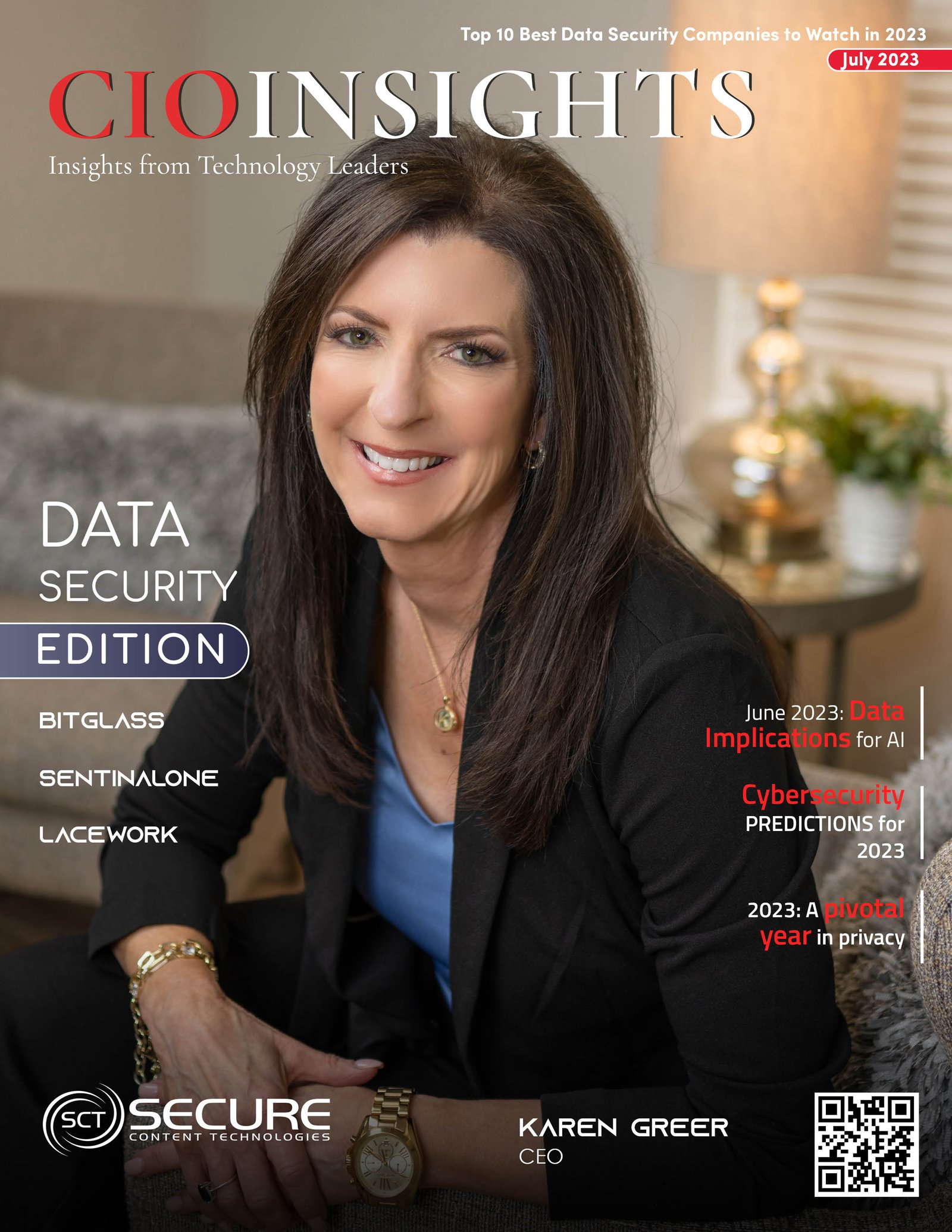What is blockchain technology? 4 small business owners explain

It’s safe to say that blockchain has reached buzzword status. This term is used with abandon at tech conferences, in research reports, and by thought leaders. It’s now a word with implicit meaning – as in, you “should” know what blockchain is, but there’s a strong chance that the person discussing it is more confused than you are.
That’s largely because despite all the buzz, blockchain is still in its infancy. At last year’s Finance Disrupted conference hosted by The Economist, panelists discussed blockchain like it’s going out of style. But they also admitted that it’s not in style yet. There was uniform consensus that although blockchain might turn the finance world on its head, it’s still a good five to 10 years away from mass adoption.
This aligns with Gartner research on the subject. The IT research firm’s recent blockchain report found that while this sector is increasingly crowded, it’s still so young that whichever blockchain technology will come to dominate likely isn’t here yet.
So, what is blockchain technology? According to Harvard Business Review:
“ WITH BLOCKCHAIN TECHNOLOGY, THE CORE SYSTEM THAT UNDERPINS BITCOIN, COMPUTERS OF SEPARATELY OWNED ENTITIES FOLLOW A CRYPTOGRAPHIC PROTOCOL TO CONSTANTLY VALIDATE UPDATES TO A COMMONLY SHARED LEDGER. A FUNDAMENTAL ADVANTAGE OF THIS DISTRIBUTED SYSTEM, WHERE NO SINGLE COMPANY HAS CONTROL, IS THAT IT RESOLVES PROBLEMS OF DISCLOSURE AND ACCOUNTABILITY BETWEEN INDIVIDUALS AND INSTITUTIONS WHOSE INTERESTS AREN’T NECESSARILY ALIGNED. MUTUALLY IMPORTANT DATA CAN BE UPDATED IN REAL TIME, REMOVING THE NEED FOR LABORIOUS, ERROR-PRONE RECONCILIATION WITH EACH OTHER’S INTERNAL RECORDS. IT GIVES EACH MEMBER OF THE NETWORK FAR GREATER AND TIMELIER VISIBILITY OF THE TOTAL ACTIVITY.”
In layman’s terms, the good news is that blockchain might be used to solve a host of future problems. The not-so-good news is that this is easier said than done. Gartner’s blockchain report confirmed that since blockchain is so new, there’s no industry consensus on product definition, feature set, or solution requirements.
To make things even tougher, blockchain’s at the peak of Gartner’s Hype Cycle curve. This means that despite a lack of clarity about blockchain, inflated expectations abound.
Even so, that doesn’t mean your small business can’t start using blockchain now. We asked four small business owners how they’re using it to get ahead. They gave us real-world examples that you can start exploring for your own small business today.
Read on to learn how small business owners are using blockchain to:
- Send supply chain payments
- Facilitate smart contracts
- Make cloud products more secure
- Boost supply chain transparency
Send supply chain payments
“I have several sites, but the one I use blockchain for is 20×60.com, which sells equestrian supplies. Most of our products are imported from Europe. I have to wire money (euros) to our suppliers at least once a week. I used to use my bank’s international wire transfer, but it’s way too slow and expensive. I was charged an origination fee, a transfer fee, a receiving fee, and about three to five percent on the foreign exchange fee.
“Now, I use Veem (formerly AlignCommerce.com) instead, which uses blockchain to circumvent the normal international wire transfer rails. It’s way faster and cheaper: no fees of any kind and only one percent on the foreign exchange fee. It’s as simple to use as PayPal.
“I give them the recipient’s email and the amount of euros I want them to receive. That’s it: no banking information [is needed]. They take the money out of my checking account via ACH. On the recipient’s end, the first time they received a transfer, they had to log into Veem and create a free account [asking] them where they wanted the funds deposited. [Once the account is] set up, they don’t have to do anything: the money just shows up in their account.
“It’s the way international money transfers should be: easy, low-cost, and fast. Traditional wire transfers as we know them are going to go away in the long run.”
- Mike Scanlin, CEO of Born to Sell
Facilitate smart contracts
“Slock.it is currently developing the USN, or Universal Sharing Network. It gives users an app to find, locate, rent, and control any object mediated by the USN from anywhere in the world. This will include bicycles, because access control to bicycles is easily mediated by a smart lock. We do not intend to produce the locks ourselves; instead, we are integrating with partners such as NOKE.
“The main advantage of using blockchain is a radically simplified user journey: open the app > find the bike nearby > pay for it > use it. There is only one key (your smartphone) for everything and no need to register or log in for the service. Paying for the bike and leaving a deposit is enough.
“There are other advantages, namely cost-effectiveness (we leverage a public infrastructure and therefore do not have heavy data center outlays); security (cryptographic keys [are more secure] by default); and transparency (all transactions are recorded and immutable).
“The beauty of blockchain is that…you do not need to talk to vendors before you start leveraging it. For example, if I wanted to send you money today, I do not need a circle or coinbase account: I could just open up a free and open-source bitcoin or ethereum client and send you the funds immediately. The same is true for smart contracts: if you can write them, you can deploy them. Yes, currently blockchain skills are in short supply. However, the same was true for internet developers back in 1999. Today, most companies have in-house resources that can produce websites and interact on social media.”
- Stephan Tual, Founder and COO of Slock.it
Make cloud products more secure
“I am currently using blockchains to securely store electronic information in a cloud computing environment. I’m the co-inventor with my son – a Computer Science major at the University of Wisconsin-Madison – on U.S. Patent No. 9,569,771, [which] was issued on February 14th, 2017, [and uses] blockchain techniques for secure cloud storage.
“Blockchains can be used…to manage cryptocurrencies like bitcoin or for financial tasks. Since blockchains are decentralized and do not require a ‘central authority’ or ‘middleman,’ this avoids the need to have a centralized database managed by a trusted third party which can be hacked or compromised.
“If you have a task or process that currently requires a database managed by a central authority or middleman, look into using blockchains instead. Blockchains may just be the next generation of network databases and are a great way to keep track of important electronic information, ownership titles for all kinds of real and personal property, etc.”
- Stephen Lesavich, PhD, JD, Founder and CEO of Lesavich High-Tech Law Group
Boost supply chain transparency
“By design, the blockchain enforces the transparency, security, authenticity, and auditability necessary to make tracing the chain of custody and attributes of products possible. [In turn, this] allows customers to derive the high-quality information needed to make more informed choices.
“Implementing supply chain transparency on the blockchain dramatically reduces the high initial cost/benefit ratio for participants. [And] its naturally distributed design frees a central organization from costly, error-prone operational duties.
“The choices we make in the marketplace determine which business practices thrive. From a diamond in a mine to a tree in a forest, it is the deepest, darkest ends of supply chains that damage so much of the planet and its livelihood. [Blockchain] could be a unanimous source of connected, secure, and incorruptible information to allow the purchasing decisions throughout supply chains – and by end consumers – to be smarter.
“Small businesses all along the supply chain can use the blockchain to store a verified claim or certificate about a product. [Then, they can] track the chain of custody and location of that product through the supply chain using Provenance’s software service. It works for raw materials and finished products…on our self-serve platform.”
- Jessi Baker, Founder and CEO of Provenance
Where to learn more
These four entrepreneurs use blockchain with success. Still, it can be tough to know where you should start. If you’re keen to learn more about blockchain, these three sources are a strong place to begin:
Your Bookkeeper
Will your accounting software support transactions with bitcoin (the cryptocurrency that blockchain supports)? Likewise, what should you do if your own country’s government allows bitcoin (like the U.S.), but other global governments don’t? If your small business has an accountant, make sure you ask these questions before blockchain gets involved.
UC Berkeley
You don’t need a degree from the University of California’s crown jewel to become a blockchain expert. That’s because real experts have done the work for you. This PDF published by UC Berkeley’s Sutardja Center for Entrepreneurship & Technology explains far more about blockchain than we have space for here. And with co-authors from companies like Google, you can rest assured that you’ll be in good hands.
GitHub
Fabric Composer is an open-source framework that lets you define a business network and script transactions in Javascript, then convert those to blockchain. As Kathryn Harrison – IBM’s Blockchain Platform Offering Leader who shepherded Fabric Composer – explains:
“ WHAT STARTED AS AN IDEA WHILE WE STRUGGLED TO TRANSLATE BUSINESS CONCEPTS TO CHAINCODE HAS NOW BECOME A POWERFUL SET OF TOOLS THAT ALLOWS DEVELOPERS TO MODEL THEIR BUSINESS NETWORKS, INTEGRATE LEGACY SYSTEMS, AND CREATE SKELETON APPLICATIONS. WE STARTED WITH AN ENTERPRISE WHITE PAPER AND HAVE EVOLVED INTO A POWERFUL FRAMEWORK THAT MAKES ANY JAVASCRIPT APP DEV INTO A BLOCKCHAIN DEVELOPER.”
Still unsure if now is the best time for your business to start using blockchain? In the meantime, cloud-based software tools for cloud storage, digital asset management, and supply chain management can help you solve problems today that blockchain might fix in the future.





